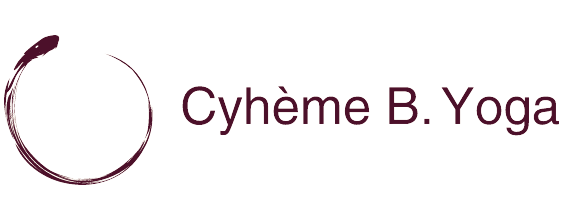
What is Yin Yoga?
First inspired by Paulie Zink, a martial art expert and Taoist Yoga practitioner, the practice of Yin yoga was developed by Paul Grilley in the late 80s as a form of slow long held floor postures. In Daoism, ancient Chinese philosophy, yin and yang are complimentary, and both needed to create balance and harmony of all things.
By analogy, a practice will be described as yin or yang depending on the context and on which areas of the body, we place the focus on (muscles/connective tissues). Yang yoga is a rhythmic and muscularly active practice while yin yoga is physically static, meditative and characterised by poses held in stillness for 3-10mn depending on one’s level of practice. From a physiological perspective, a yang practice stimulates the muscles while a yin practice will target our deepest connective tissues, joints, ligaments bones and fascia. Because all our tissues must be stimulated to stay in good health, both yin and yang forms of exercise are necessary for a healthy and balanced body and mind, one cannot exist without the other. In that sense, yin yoga is not a complete practice.
The ancient beliefs in Chinese meridian theory are also part of the practice of yin yoga. According to the theory, the meridians are invisible interconnected energetic pathways that carry Chi energy (vital energy) and blood through the body. There are 6 upper body meridians: lung, large intestine, pericardium, triple heater, heart and small intestine and 6 lower body meridians: kidney, liver, spleen, stomach, gallbladder and urinary bladder. When stimulated, the meridians nourish, strengthen the vital organs and moisten the tendons and bones. Chi is made of our “jing” essence inherited at birth (constitutional, stored in the kidneys) and of postnatal chi. It is deficient when the energy is weak and lacks vibrancy (yin condition that relates mostly to the kidneys) or stagnant if the energy is distorted (yang condition that relates to the liver). Yin yoga affects deficient chi because we target energetic channels that flows through their respective organs. While holding the poses and asking a little more from our ranges of motion, we stimulate those stagnant areas for chi to move through them bringing harmony and in the long term, preventing illnesses. The harmony of chi can also affect our emotional tone. For example, a depleted/ deficient kidney chi is associated with feeling fearful, however when in balance, fear turns into wisdom (knowledge).
The practice articulates around 4 steps: first, we come into a shape to our appropriate edge non-aggressively, what is too little or too much sensation is what is enough. Then we invite stillness while relaxing the muscles (except for areas that are vulnerable because of injury and will need some muscle engagement). We then stay in in the pose to enable chi to flow and nourish the meridians. The time will depend on the practitioner’s experience (3mn for beginners).
Yin yoga has intrapersonal benefits that are physical, emotional, energetic and mental.
A lack of movement or injury increases the amount of connective tissue around the joints and ultimately limits our range of motion. Considering meridian theory, if areas in the body become less mobile and locked, there is less chi movement leading to imbalance in our organs. Yin yoga helps maintaining healthy joint stability, moistens the ligaments and improves our range of motion which in turn will serve our yang practice better by adding more flexibility to the muscles.
The practice of yin yoga helps balancing the emotional tone by breathing consciously. Breathing is one of the functions of the autonomic nervous system, breathing through the diaphragm will stimulate the vagus nerve that in turn, will act as a mediator for the parasympathetic nervous system. This aspect of the practice improves our responses to daily stresses, keeps the immune system steady and in the long term, prevents disorders such as PTSD or other stress related illnesses.
Energetically, yin yoga is a chi enhancement practice, it removes energetic blockages and harmonises the meridians. some poses such as butterfly can renew our sense of vitality because it targets the kidney and urinary bladder meridians which house our jing chi (vital energy inherited at birth). The practice feeds the areas that are deficient and drains areas that are in excess. Similarly, it harmonises the disturbing emotions enabling us to create a non-judgemental feel towards ourselves.
On a mental level, yin yoga is an occasion for training our attention by being a meditative yoga practice. It develops mental endurance because it develops our capacity to remain still in a given pose while experiencing physical and sometimes emotional discomfort. It increases our capacity to becoming aware and to accept our inner landscape leading to a better relationship with ourselves and with others (interpersonal benefit, spiritual)
All those aspects of the practice are distinct but interrelated and the actions of yin yoga on the body heart and mind form an individual experience of self-transformation.

